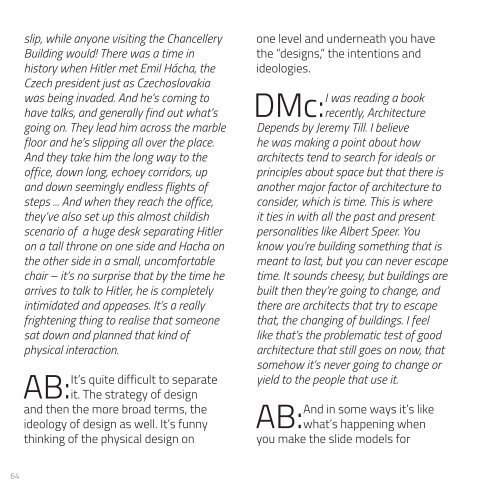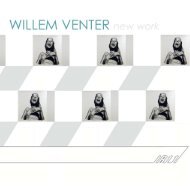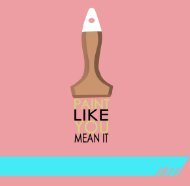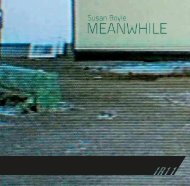Projection by David McDiarmid
This catalogue accompanies: Projection, an exhibition by David McDiarmid 10 - 25 April 2015, Interviewroom11, Edinburgh. © the artists 2015, all the rights reserved. First published by IR11 publications, 2015.
This catalogue accompanies:
Projection, an exhibition by David McDiarmid 10 - 25 April 2015, Interviewroom11, Edinburgh.
© the artists 2015, all the rights reserved.
First published by IR11 publications, 2015.
Create successful ePaper yourself
Turn your PDF publications into a flip-book with our unique Google optimized e-Paper software.
slip, while anyone visiting the Chancellery<br />
Building would! There was a time in<br />
history when Hitler met Emil Hácha, the<br />
Czech president just as Czechoslovakia<br />
was being invaded. And he’s coming to<br />
have talks, and generally find out what’s<br />
going on. They lead him across the marble<br />
floor and he’s slipping all over the place.<br />
And they take him the long way to the<br />
office, down long, echoey corridors, up<br />
and down seemingly endless flights of<br />
steps ... And when they reach the office,<br />
they’ve also set up this almost childish<br />
scenario of a huge desk separating Hitler<br />
on a tall throne on one side and Hacha on<br />
the other side in a small, uncomfortable<br />
chair – it’s no surprise that <strong>by</strong> the time he<br />
arrives to talk to Hitler, he is completely<br />
intimidated and appeases. It’s a really<br />
frightening thing to realise that someone<br />
sat down and planned that kind of<br />
physical interaction.<br />
It’s quite difficult to separate<br />
AB: it. The strategy of design<br />
and then the more broad terms, the<br />
ideology of design as well. It’s funny<br />
thinking of the physical design on<br />
one level and underneath you have<br />
the “designs,” the intentions and<br />
ideologies.<br />
I was reading a book<br />
DMc: recently, Architecture<br />
Depends <strong>by</strong> Jeremy Till. I believe<br />
he was making a point about how<br />
architects tend to search for ideals or<br />
principles about space but that there is<br />
another major factor of architecture to<br />
consider, which is time. This is where<br />
it ties in with all the past and present<br />
personalities like Albert Speer. You<br />
know you’re building something that is<br />
meant to last, but you can never escape<br />
time. It sounds cheesy, but buildings are<br />
built then they’re going to change, and<br />
there are architects that try to escape<br />
that, the changing of buildings. I feel<br />
like that’s the problematic test of good<br />
architecture that still goes on now, that<br />
somehow it’s never going to change or<br />
yield to the people that use it.<br />
And in some ways it’s like<br />
AB: what’s happening when<br />
you make the slide models for<br />
64














